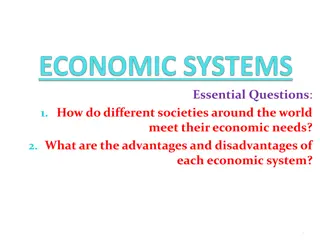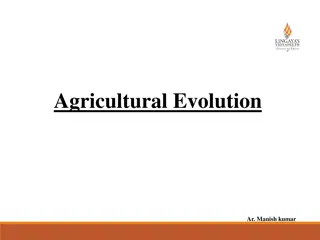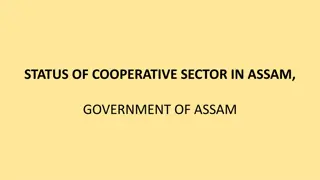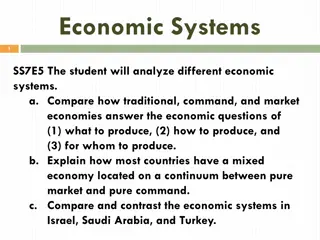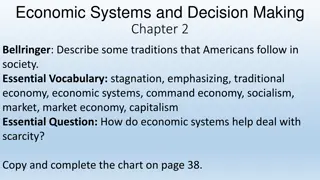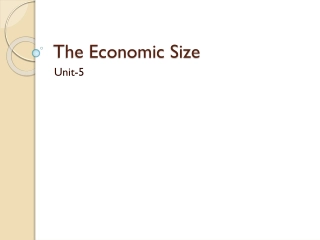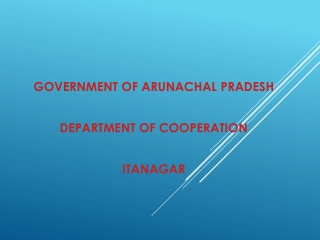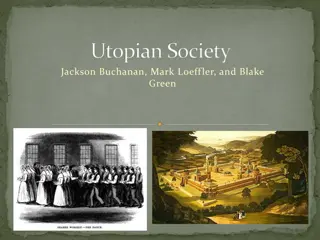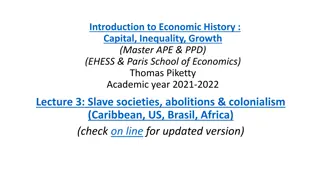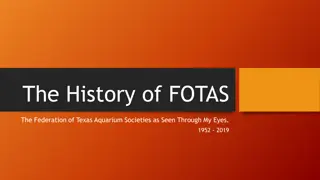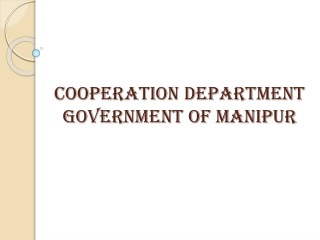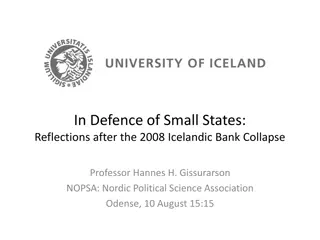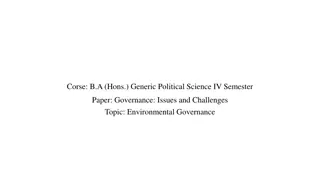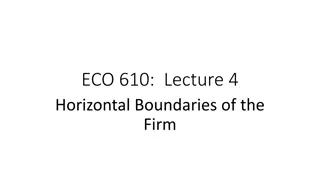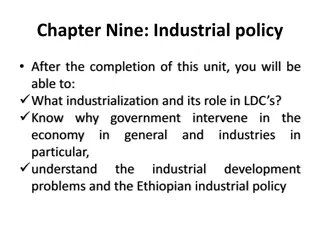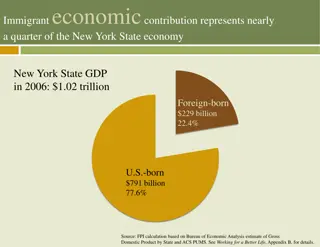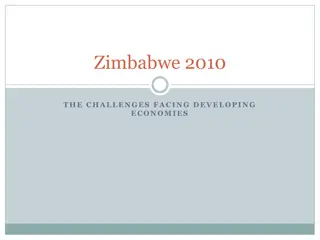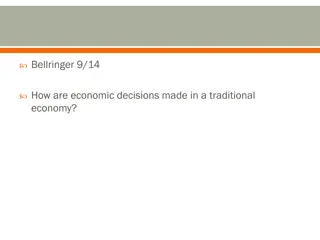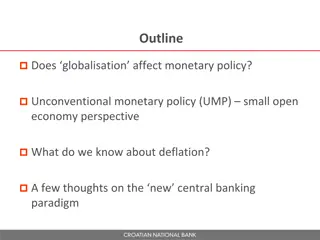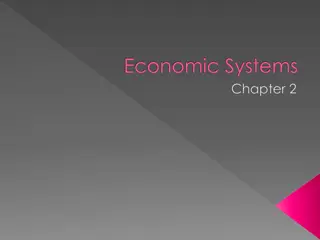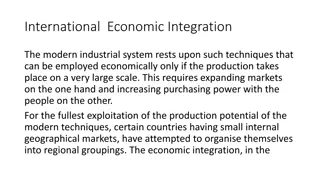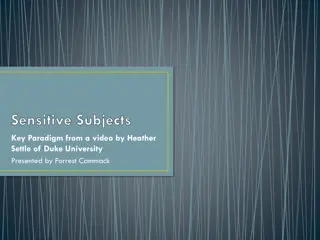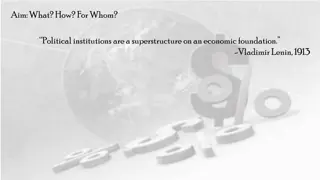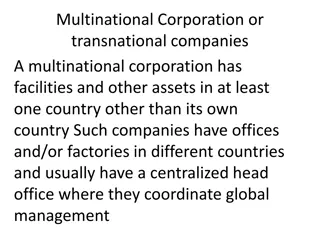Understanding the Interaction of States, Societies, and Economies
Explore the relationships between states and markets through the lenses of neoclassical economics, Keynesianism, and political economy. Delve into the concepts of market imperfections, state failure, and the preconditions for perfect markets, shedding light on key economic policies and theoretical frameworks.
Download Presentation

Please find below an Image/Link to download the presentation.
The content on the website is provided AS IS for your information and personal use only. It may not be sold, licensed, or shared on other websites without obtaining consent from the author. Download presentation by click this link. If you encounter any issues during the download, it is possible that the publisher has removed the file from their server.
E N D
Presentation Transcript
A Critical Introduction to Economics Slides based on the book by J ger/Springler: konomie der Internationalen Entwicklung. Eine kritische Einf hrung in die Volkswirtschaftslehre Chapter 3: Chapter 3: The State, the Society and the Economy
The State, the Society and the Economy What s the role of states and markets and how are they related? Neoclassical economics Keynesianism Political economy 1. 2. 3. General approach Key concepts Implications for economic policy
3.1.1 Neoclassical economics: general approach The superiority of markets Market imperfections (market failure) State failure Cobweb model to market equilibrium
Pre-concitions for perfect markets (in the short run) Freedom to set up contracts Protection of private property Existing legal framework Competitive market requires Many buyers and sellers No barriers to entry Identical goods Perfect information
The labour market as a normal market Simultanous equilibrium at all markets Equilibrum wage at the labour market
3.1.2 Key-concepts in neoclassical economics (1) Markte imperfections that do no lead to a market solution (1) Public goods Not excludable No rivalry in consumption (2) Natural monopolies No market provision because of high fixed costs Separate infrastructure and provision
3.1.2 Key-concepts in neoclassical economics (2) Market imperfections that lead to an undesired market result (1) Externalities (2) Asymmetric information
(1) Externalities Negative Externalities and positive externalities (Social value exceeds private value) Private solutions Moral codes and social sanctions Charitable organizations Coase theorem: well defined property rights, low transaction costs allow for private solutions Command-and-Control Policies Usually take the form of regulations: Forbid certain behaviour Require certain behaviour Market-Based Policies Taxes and subsidies Tradable pollution permits
(2) Asymmetric information The lemons problem: When some people know more than others market failures may result: Adverse selection Moral hazard Privates try to reduce asymmetric information by signaling and screening, monitoring asymmetric information may call for government action: increase transparency
3.1.3 Implications for economic policy How to prevent market failure? Direct intervention Indirect intervention Reasons for state failure: The existence of lobbyists Political business cycle
3.2.1 Keynesianism Keynesianism: general approach Macroeconomic market failure No equilibrium but unemployment in the labour market: critique of the neoclassical model of the labour market State intervention is necessary to stabilize the economy
3.2.2 Key-concepts in Keynesianism The labour market in a Keynesian (Kaleckian) perspective Demand for labour depends on effective demand (output)
(1) The Labour market tends towards under-employment
3.2.3 Implications for economic policy Active state is required to keep output at a highl level high level of employment (critiziced by neoclassical NPE and theory of rational expectations) Stabilize expectations (to reduce uncertainty) Provide institutions that stabilize wages Active state intervention by using fiscal policy: (functional finance, fine-tuning)
Fiscal policy and deficit spending Functional Finance: G-T = S(Yf) INV (Yf) [+ M (Yf) X (WY)] Crowding-in instead of crowding out Multiplier effect: m = 1/(1-MPC) Fiscal stablization State as employer of last resort
3.3.1 Political Economy Political Economy: general approach Integrative analysis of the economy, the society and the state (societal superstructure) Different types of power: relational power, strategic power, structural power) in a class society Modern capitalism emerged with modern state (intrinsically related)
3.3.2 Key-concepts in Political Economy Functionalist state theory Instrumentalist state theory (1) The state as an expression of condensed societal (class) relations (2) Historical forms of statehood
(1) The state as an expression of condensed societal (class) relations Relative autonomy of the state Strategic selectivity State-civil society nexus Hegemony and organic intellectuals Common sense and counter-hegemony
(2) Historical forms of statehood Liberal minimal state Fordist welfare state National (neo-liberal) workfare state





